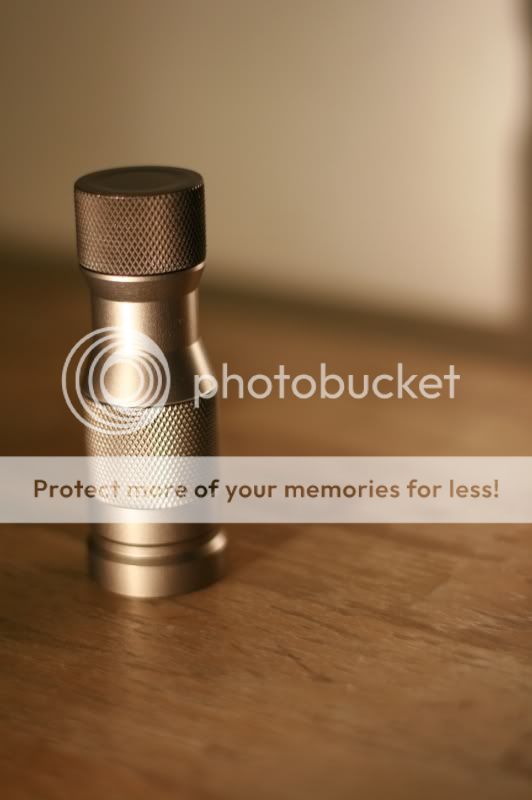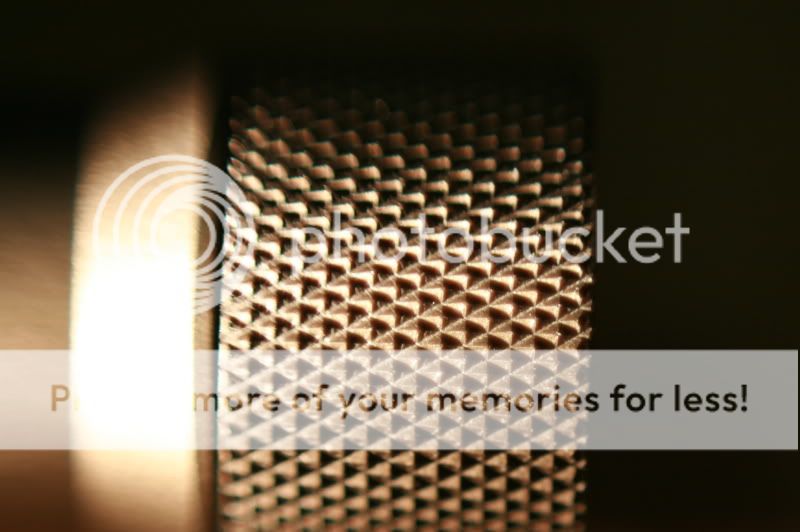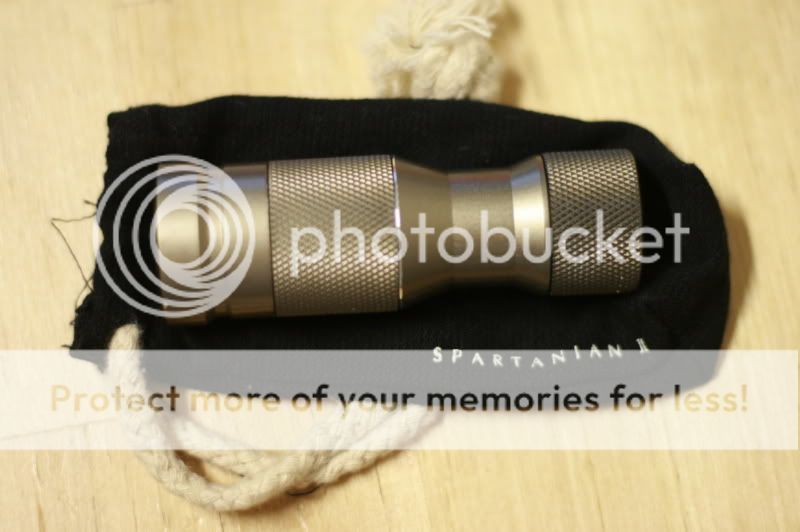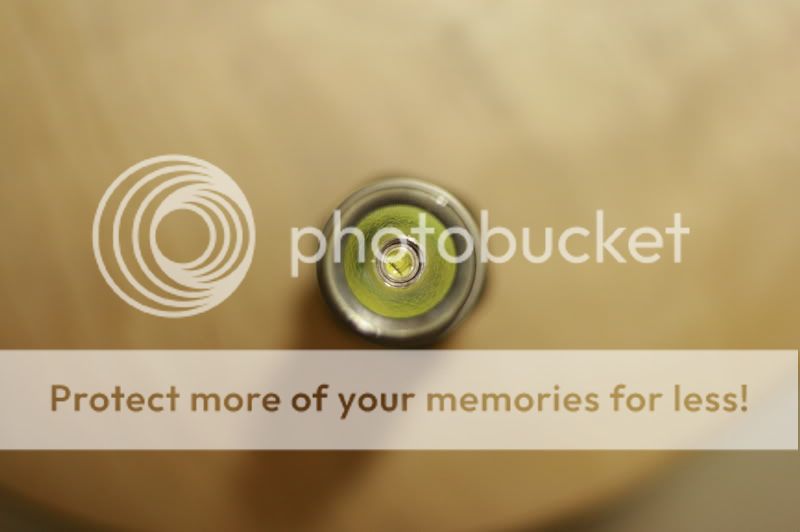
So i bought this light from the preorder...its a pretty neat little thrower! and looks good too.

The Macros for the KNurling, this really grips your skin!


Nice little pouch it came in

Flood Reflector, focused on the iner part

Flood reflector, focused on the outer part

Perfectly centerered..

The Flood Reflector



1/3200, 1.8 the first one is the Throw reflector, the second one is the flood reflector


.
Tiablo A9 on left Spartanian II on right underexposed (differnt setting then above)

My Lux Readings:
Light Lux @ 1m
Ex10 1130
Nitecore Extreme 2850
Jet-1 pro first gen 2740
Tiablo A9 16840
Malkoff 3430
Spartanian 2 6710
you cant really compare my lux numbers to anyone elses due to differences when measuring
just wanted to put the photos up first....wite up will come in a bit!
Crenshaw
Last edited:

